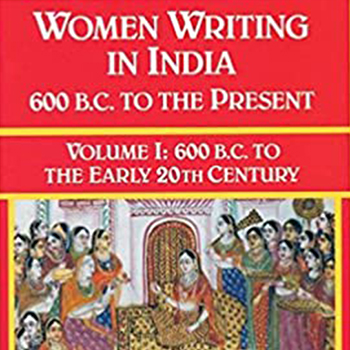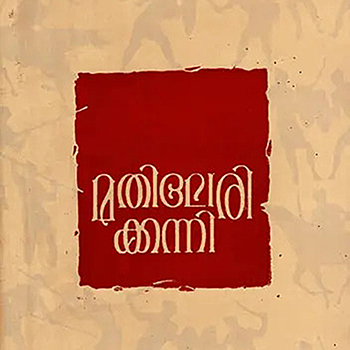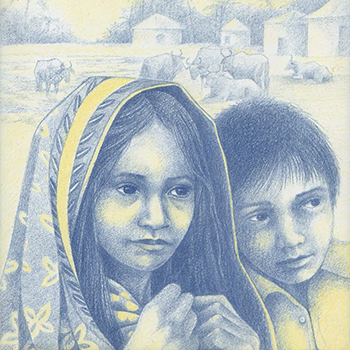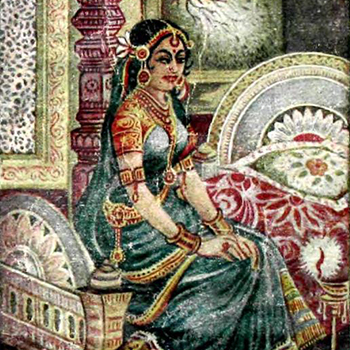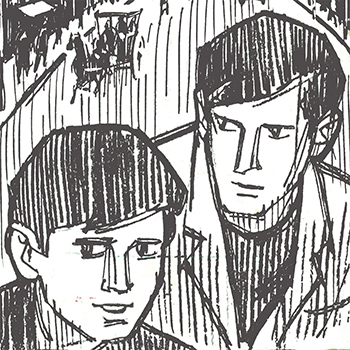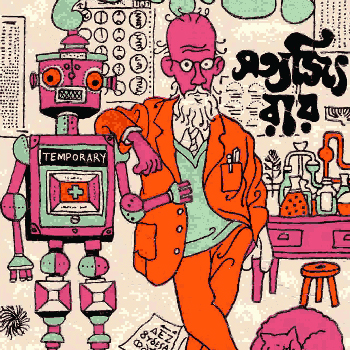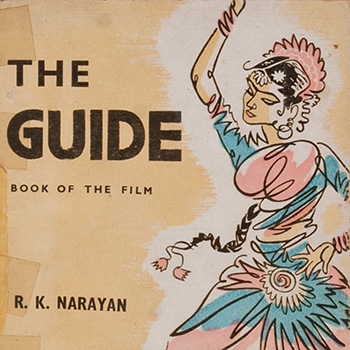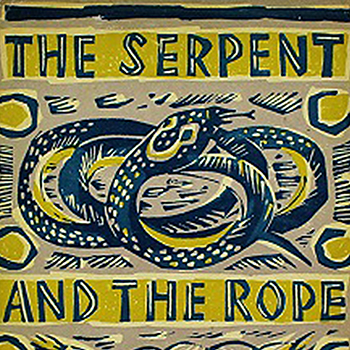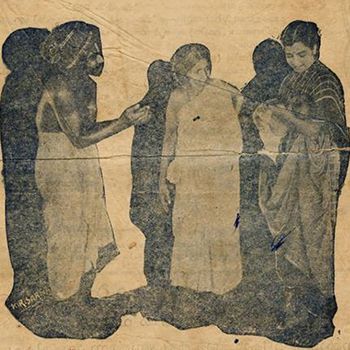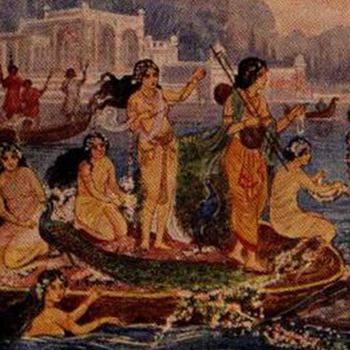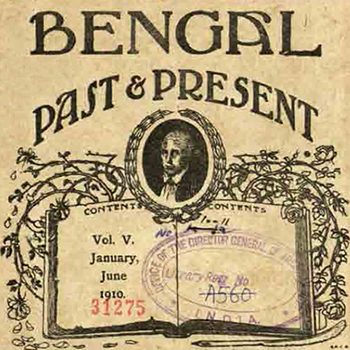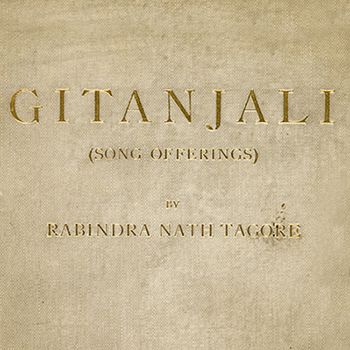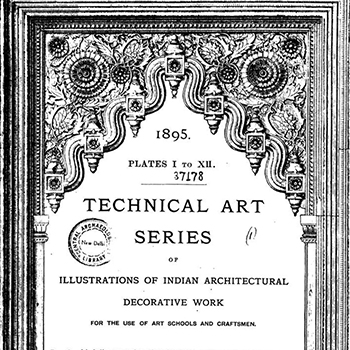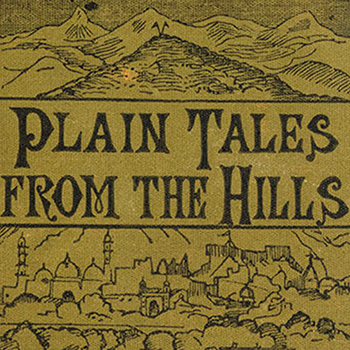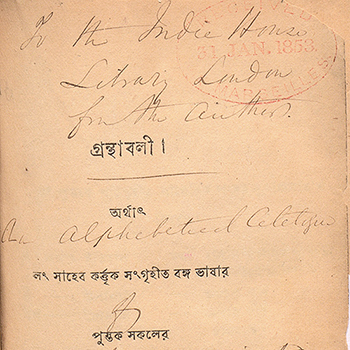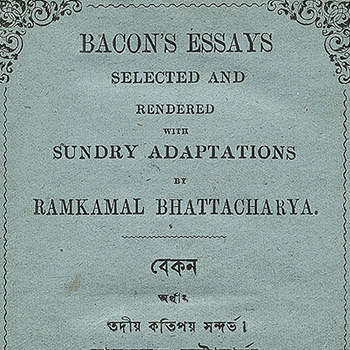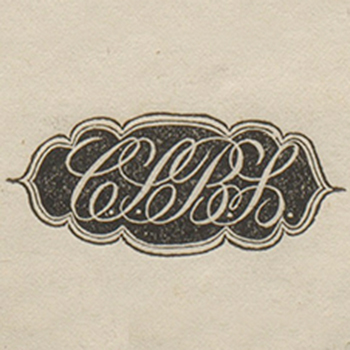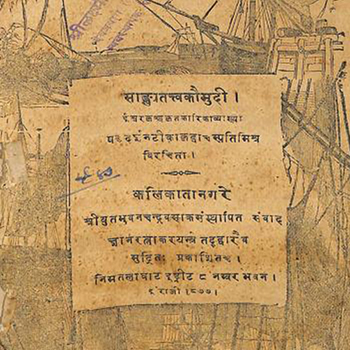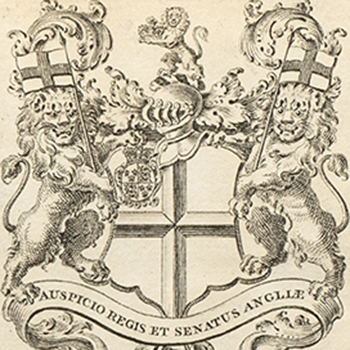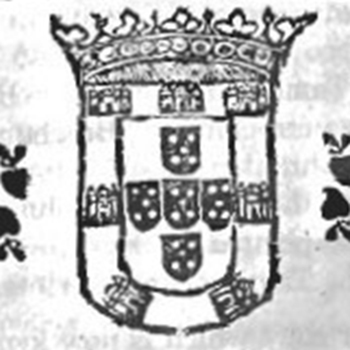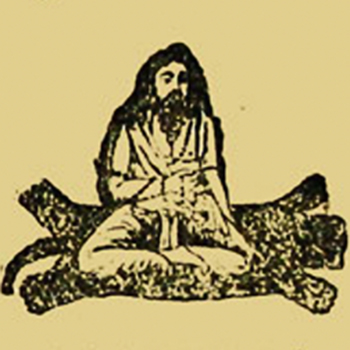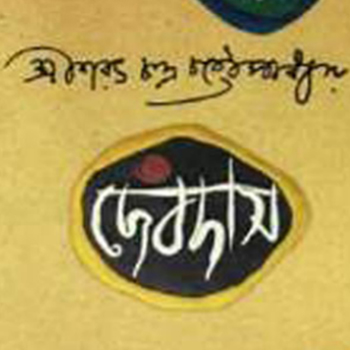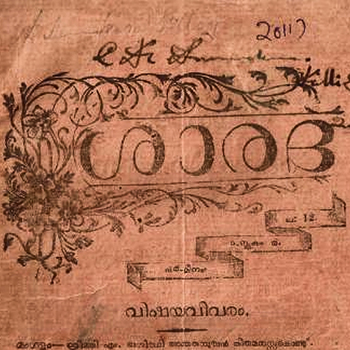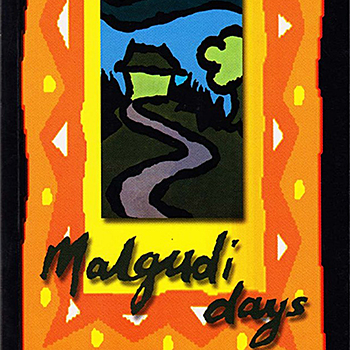Book Cover
(1991-2000) Post-Independence
(4 items)
(1981 - 1990) Post-Independence
(1 items)
(1961 - 1970) Post-Independence
(4 items)
(1951 - 1960) Post-Independence
(5 items)
(1931 - 1940) Pre-Independence
(3 items)
(1921 - 1930) Pre-Independence
(5 items)
(1901 - 1910) Pre-Independence
(2 items)
(1891 - 1900)
Pre-Independence
(1 items)
(1891 - 1900) Pre-Independence
(3 items)
(1881 - 1890) Pre-Independence
(2 items)
(1851 - 1860)
Pre-Independence
(2 items)
(1841 - 1850)
Pre Industrialisation
(1 items)
(1831 - 1840)
Pre Industrialisation
(2 items)
(1821 - 1830)
Pre Industrialisation
(2 items)
(1811 - 1820)
Pre Industrialisation
(1 items)
(1771 - 1780)
Pre Industrialisation
(3 items)
(1711 - 1720)
Pre Industrialisation
(1 items)
(1601 - 1700)
Pre Industrialisation
(1 items)
(1601 - 1610)
Pre Industrialisation
(1 items)
(1571 - 1580)
Pre Industrialisation
(1 items)
(1551 - 1560)
Pre Industrialisation
(1 items)
Book Cover
(1551 - 1560)
Pre Industrialisation
(1 items)
Carthila de lingoa Tamul e Portugues
Unknown
Unknown
First Tamil book was printed in Lisbon on 1554 AD with Romanized Tamil script.This page is from “Luso-Tamil Catechism” printed in Lisbon in 1554 CE. It is a multilingual book with words printed in Roman type in both Tamil and Portuguese. The oldest Tamil work that has been printed is this one. The book has 38 pages and begins with Tamil sentences printed in red, followed by translations into Portuguese printed in black. Authors of the book were Tamil Christians living in Lisbon - Vincente de Nazareth, Thome da Cruz and Jorge Carvalho. They were under the supervision of Father Joao Villa de Conde. This single surviving copy of the book is at the Ethnological Museum at Belem. The book's title is Primer, and it briefly summarises all a Christian needs to know in order to be saved. Lord, King Dom John III, also commanded that it be produced in Tamil and Portuguese, with the Tamil translation appearing above in red. Fr. Xavier Thaninayagam rediscovered this work in the 1950s.
Details >>(1571 - 1580)
Pre Industrialisation
(1 items)
Thambiran Vanakkam
Unknown
Unknown
This was the first book to be published in an Indian language. Using paper brought from China, Portuguese missionary Henrique Henriques (also known as Anrique Anriquez) produced "Thambiraan Vanakkam," the first book ever written in an Indian language. The 10x14 cm book, according to Tamil historian Pulavar S. Raju, contained 16 pages with 24 lines each and was written in the exact Tamil script that was later employed on palm leaves and stones. The book was a translation of Francis Xavier's "Doctrina Christam," which was originally written in Portuguese.
Details >>(1601 - 1610)
Pre Industrialisation
(1 items)
Kartarpur Bir (manuscript or codex) of the Guru Granth Sahib
Unknown
Unknown
The Guru Granth Sahib is known as the religious holy scripture of Sikhism. It is considered by the Sikhs as the final, sovereign, and eternal Guru, following the lineage of the ten human gurus of the religion. It contains the traditions and teachings of fourteen Hindu Bhakti movements such as Ramananda, Kabir, and Namdev, among others, and one Muslim Sufi saint called Sheikh Farid. The Adi Granth was the first rendition completed by the fifth guru, Guru Arjan. The second rendition became known as the Guru Granth Sahib, and it is also referred to as the Adi Granth. The Guru Granth Sahib was composed mainly by six Sikh Gurus. They are: Guru Nanak, Guru Angad, Guru Amar Das, Guru Ram Das, Guru Arjan, and Guru Tegh Bahadur.
Details >>(1601 - 1700)
Pre Industrialisation
(1 items)
Adhyathma Ramayanam
Unknown
Unknown
Thunchaththu Ramanujan is considered the father of Malayalam literature. The Adhyathma Ramayana in Sanskrit was written by Veda Vyasa. Adhyatma Ramayana is the Malayalam version of the Ramayana, written in the early 17th century by Thunchaththu Ramanujan Ezhuthachan. It is considered to be a classic of Malayalam literature. Ezhuthachan described it in kilippattu (bird song) format. The Adhyatma Ramayana represents the spiritual context of the story of Lord Rama.
Details >>(1711 - 1720)
Pre Industrialisation
(1 items)
Four Gospels and Acts of the Apostles
Unknown
Unknown
A Tamil translation of the Acts of the Apostles and the Four Gospels was printed by missionaries in the little Danish seaside settlement of Tharangambadi. This was a turning point in the development of Indian Christian literature as it was the first Biblical translation ever printed in an Indian language. The Tamil edition, which is about 500 pages long, took nine months to print.
Details >>(1771 - 1780)
Pre Industrialisation
(3 items)
Calendar for the year of our Lord MDCCLXXVIII
Unknown
Unknown
This is the world’s earliest surviving text printed in Bengal and Northern India, a copy of the ‘Calendar for the year of our Lord MDCCLXXVIII”. It is in the SOAS library, those are calculated to the Meridian of Calcutta. Little known to the outside world, this is a calendar – sort of like a yearly almanac – printed around December 1777 in Calcutta. Calendars were an everyday document in the 18thcentury, and were a common way to mark events, and to keep track of things like the moon and the tides.
Details >>Nasranikal Okkekkum Ariyendunna Samkshepavedartham
Unknown
Unknown
This was the first printed book in Malayalam. Clement Pianius was the author of this book. A hard copy of this is available in the library of Dharmaram College. It has 287 pages and was released in 1772 by the Propaganda Fide Congregation in Rome.
Details >>A Grammar of the Bengal Language
Unknown
Unknown
A Grammar of the Bengal Language constitutes the first grammar book of the Bengali language, Written in 1778 by Nathaniel Brassey Halhead and printed in Hoogly. The book was written at the request of Governor Warren Hastings by Nathaniel Halhed (25 May 1751 – 18 February 1830), a philologist and Orientalist. The book marked the beginning of the standardisation of Indian languages. Halhed recommended in the book that foreign accretions be removed from Bengali and ‘Sanskrit be made the fountainhead for any needed innovations.’ One of the primary aims in producing this work was to promote familiarity with the Bengali language among the European settlers in Bengal, to assist in their subjugation over the native population.
Details >>(1811 - 1820)
Pre Industrialisation
(1 items)
Sambad Kaumudi
Ram Mohan Roy
Ram Mohan Roy
Sambad Kaumudi, a Bengali weekly newspaper from Kolkata, was published by Ram Mohan Roy during the first half of the 19th century. It was a well-known pro-Reformist periodical that actively advocated for the Sati Pratha's removal. It was published in English and Bengali in November 1821. Raja Ram Mohan Roy was the founder and editor of two vernacular weekly newspapers, viz., Sambad Kaumudi (in Bengali) and Mir'ut'l-Akhbar (in Persian) and was also the founding member of the English newspaper "Bengal Herald".
Details >>(1821 - 1830)
Pre Industrialisation
(2 items)
Mirat-ul-Akhbar
Ram Mohan Roy
Ram Mohan Roy
Mir'ut'l-Akhbar was a Persian language journal founded and edited by Raja Ram Mohan Roy. It was first published on April 12, 1822, and is published on a weekly basis on Fridays. Mir'ut'l-Akhbar means "mirror of news. In 1823, Mohan Roy had to close the newspaper due to the degrading conditions set by the newly promulgated press ordinance. It curtailed the liberty and expression of the free press.
Details >>Bombay Samachar
Unknown
Unknown
The Bombay Samachar was first published on July 1st, 1822, and it is Asia’s oldest continuously published newspaper, comprised of three small quarto sheets. The Bombay Samachar, now known as Mumbai Samachar, is the oldest continuously published newspaper in India. Fardunjee Marzaban was the founder of Bombay Samachar, which was printed primarly in Gujarati. He established the first vernacular printing press in Bombay.
Details >>(1831 - 1840)
Pre Industrialisation
(2 items)
Bigyana Sebadhi (Treasures of Science)
Unknown
Unknown
This book is a translation of Lord Henry Brougham’s early 19th century work, titled ‘Treatise on the Objects, Pleasures and Advantages of Science. The Reformer Press, Calcutta, revised and released this work in 1832. The book covers a wide range of topics, including natural philosophy, physical science, and mathematical science. The book was originally published in England by the Society for the Diffusion of Useful Knowledge at a relatively inexpensive price of one and a half penny for the purpose of disseminating knowledge to those who were ‘unable to avail themselves of experienced teachers of may prefer learning by themselves’.
Details >>The Bombay Times and Journal of Commerce
Unknown
Unknown
The Bombay Times and Journal of Commerce was founded in 1838 by Raobahadur Narayan Dinanath Velkar to serve the British residents of western India. At the beginning, it was published twice weekly, the paper became a daily in 1851. J.E Brennan was the editor of this newspaper. On September 28th, 1861, "The Bombay Times and Standard" merged with "Bombay Telegraph and Courier" and was renamed as "The Times of India". The Times of India is the world’s largest-selling English newspaper.
Details >>(1841 - 1850)
Pre Industrialisation
(1 items)
Bhugol Brittanta (Geography)
Unknown
Unknown
Bhugol Brittanta was authored by W.H. Pearce and published in 1846 by the Calcutta School Book Society Press. The original version was released in 1819. This trend in the production of geographical descriptions may also be noticed in other recent works, such as J. Lawson's Pasvabali (Animal Biographies, 1822) or J.D. Pearson's work on Geography and Astrology, published in 1827. The book is aimed at young students. There are five sections to the book. The planet earth's characteristics, natural geography, and the continents are covered in the first three sections. While discussing the topography of Hindusthan (northern India and beyond), the second section also provides historical narratives of Afghan emperors, Taimur Beg, and Mughal emperors (such as Babur and Akbar). The fifth and last section is all about Bengal, specifically the cities of Calcutta, Dhaka, and Murshidabad.In the book's preface, Pearce emphasises that the text is based on historical facts and that the maps created using the book's information will be of great value to readers.
Details >>(1851 - 1860)
Pre-Independence
(2 items)
Granthabali
Unknown
Unknown
The first of Reverend James Long's seven bibliographies, Granthabali, was released in 1852 by the Serampore Mission Press. Between 1801 and 1867, he compiled a number of Bengali writings, and the Granthabali is a very uncommon one of them. An index of broad subject areas for the books featured in the compilation is included in the Granthabali's first section. Among the many subject categories are those for history, narratives, novels, medicine, poetry, short stories, moral instruction, Christian tracts, periodicals, physics, the Vedas, Vaishnava writings, geography, law, Islamic texts, essays, grammar, and newspapers.
Details >>Bacon's Essays translated by Ramkamal Bhattacharya
Unknown
Unknown
This book is a selection of Francis Bacon’s essays, compiled and translated by Ramkamal Bhattacharya. Francis Bacon was a prominent English philosopher, author, and politician who lived from 1561 until 1626. Ramkamal Bhattacharya was the headmaster of the Calcutta Normal School as well as a student at the Sanskrit College. Francis Bacon held the positions of Lord Chancellor and Attorney General of England. The writings in this collection cover a variety of topics, including knowledge, scriptures, kids, luck, and mistrust. The Trübner and Co mark on the first page of this book indicates that it was included in the Trübner American and Oriental Record, a list of all books imported from throughout the world.
Details >>(1881 - 1890) Pre-Independence
(2 items)
Plain Tales from the Hills
Unknown
Unknown
Plane Tales from the Hills is the first collection of short stories written by Rudyard Kipling. Rudyard Kipling is remembered for his stories and poems of British soldiers in India and for his tales for children. Plane Tales from the Hills was published by Thacker, Spink and Company, Calcutta in 1888.
Details >>Indulekha
Unknown
Unknown
O. Chandu Menon's Indulekha was the first significant novel to be written in the Malayalam language. The Spector Achukoodam, Kozhikkode, printed it in 1889. It established the book as a brand-new, thriving genre and served as an important turning point in Malayalam literature history.
Details >>(1891 - 1900)
Pre-Independence
(1 items)
Six Acres and a Third/Chha Maana Atha Guntha
Unknown
Unknown
Chha Maana Atha Guna, or Six Acres and a Third, is an Odia language novel written by Fakir Mohan Senapati in the 19th century. Fakir Mohan Senapati is known as the "Father of Modern Odia Literature." It was published in an English language translation by the University of California Press. This novel explains the tale of wealth and greed, of property and theft.
Details >>(1891 - 1900) Pre-Independence
(3 items)
The Mahabharat of Moropant
Unknown
Unknown
Moropant was a very prominent Marathi poet of 17th century.. The Mahabharat of Moropant was written by Moropant Modak and published by the Nirnaya Sagar Press, Bombay in 1891.
Details >>Technical Art Series Of Illustrations Of Indian Architectural Decorative Work For The Use Of Art Schools And Craftsmen
Unknown
Unknown
The Technical Art Series of Illustrations of Indian Architectural Decorative Work For The Use Of Art Schools And Craftsmen was published by the Survey of India Offices, Calcutta, in 1890.
Details >>Barnabodha
Unknown
Unknown
Barnabodha was an Odia primer compiled by Madhusudan Rao. This book is the 6th volume of the original book and was published in 1896. Currently, none of the previous versions of this book are available anywhere in either physical or digital form. This book's photocopy was collected from Nirmal Kanta Mohanty and then the digital restoration was done by Subhashish Panigrahi.
Details >>(1901 - 1910) Pre-Independence
(2 items)
Bengal, Past & Present
Unknown
Unknown
"Bengal, Past and Present" is a journal published by the Calcutta Historical Society, which was first released in 1907. Its purpose was to create a scholarly platform for historians, researchers, and academics to publish their work on various aspects of Bengal’s history, including its society, culture, economy, and politics.
Details >>Gitanjali
Unknown
Unknown
Gitanjali is a collection of poems written by Rabindranath Tagore. Tagore received the Nobel Prize for Literature for the English translation of Gitanjali in 1913. Gitanjali was published in London in 1912. Originally, it was written in Bengali, and the poems were based on mediaeval Indian lyrics of devotion.
Details >>(1911 - 1920) Pre-Independence
(4 items)
Matru Puja
Unknown
Unknown
Matru Puja is a poetry book authored and compiled by Kabisekhara Chintamani. It was published in Kishorechandra press, Ganjam in 1913.
Details >>Devdas
Unknown
Unknown
Devdas is a Bengali romantic novel written by Sarat Chandra Chatterjee in 1917. It was originally written in Bengali, then it got translated many times. Devdas has been filmed numerous times, including in 1955 directed by Bimal Roy and starring Dilip Kumar and Suchitra Sen, and later in 2002 directed by Sanjay Leela Bhansali and starring Sharukh Khan and Aishwarya Rai.
Details >>Sharada
Unknown
Unknown
The publication of Sharada, the second Malayalam women's magazine in Kerala, began in Thripunithura, Kochi, in November 1904. B. Kalyani Amma, T.C. Kalyani Amma, and T. Ammukutty Amma edited Sharada. It was Kerala's first women-edited women's publication. The journal was published by Bharathi Vilasam Press and owned by K. Narayana Menon.
Details >>(1921 - 1930) Pre-Independence
(5 items)
Bharathi Magazin
Unknown
Unknown
Bharati Magazine is a Telugu monthly magazine by Kashinathuni Nageshwara Rao. It is also known as Bharati. Kasinadhuni Nageswararao, better known as Nageswara Rao Pantulu, was an Indian journalist, nationalist, politician, businessman, and staunch supporter of the Khaddar movement.
Details >>Rahasya Manjari
Unknown
Unknown
"Rahasya Manjari" is a significant poetry book authored by Deba Durlabha Das, published in 1928. Written in the Odia language, it is a notable contribution to the literary landscape of Odisha during the early 20th century. This period was marked by a resurgence in regional literature and cultural identity, partly driven by the broader context of India's struggle for independence and a renewed interest in indigenous languages and traditions. Deba Durlabha Das was an influential poet in the Odia literary tradition. His works reflect the rich cultural and spiritual heritage of Odisha, a region known for its classical literature, temple architecture, and festivals. His poetry often delves into themes of mysticism, nature, and the philosophical quest for truth, embodying a deep sense of introspection and spirituality.
Details >>Bharatara Itihasa katha (Stories from History of India)
Unknown
Unknown
Bharatara Itihasa Katha was published in 1929 and edited and published by Udayanath Sadangi. Total 28 stories are there. Stories on King Bhagiratha, Ramayana, Mahabharata, Budhadeba, Kharabela, Chadragupta, Asoka, Humayun and Akbar, Rana Pratap, Sibaji and many others are compiled in this book.
Details >>Keralam
Unknown
Unknown
"Keralam" was a significant Malayalam-language daily magazine that played a crucial role in the cultural, social, and political landscape of Kerala during the pre-independence period from 1921 to 1930.
Details >>(1931 - 1940) Pre-Independence
(3 items)
To All Fighters for Freedom
Unknown
Unknown
To All Fighters for Freedom was written by Narayan, Jaiprakash and published by Congress Socialist Group, Karachi.
Details >>Coolie
Unknown
Unknown
Mulk Raj Anand’s novel Coolie has become a landmark in modern Indian literature. Coolie was published in 1936. The novel condemned the social, economic, and cultural impact of more than two centuries of British occupation and indicted India’s own rigid caste system, which had long separated its citizens into groups based on their work status and their ethnicity.
Details >>Bhashaposhini Chithra Masika
Unknown
Unknown
"Bhashaposhini Chitramasika" is a notable Malayalam-language periodical that played a significant role in the cultural and literary life of Kerala during the early 20th century. In 1939, the magazine was at the forefront of documenting and promoting the diverse cultural, social, and literary activities of the region.
Details >>(1941 - 1947) Pre-Independence
(2 items)
Malgudi Days
Unknown
Unknown
R.K. Narayan's Malgudi Days is a collection of short stories, published in 1943 by Indian Thought Publications. The book includes 32 stories, all set in the fictional town of Malgudi, located in south India. Each of the stories portrays a facet of life in Malgudi.
Details >>The English Teacher
Unknown
Unknown
The English Teacher is a novel written by R.K. Narayan in 1945. The novel is dedicated to Narayan’s wife, Rajam. The story is a series of experiences in the life of Krishna, an English teacher, and his quest for inner peace and self-development after the traumatising death of his wife. It is part of a series of novels and collections of short stories set in Malgudi.
Details >>(1951 - 1960) Post-Independence
(5 items)
Banalata Sen
Satyajit Ray
Satyajit Ray
Banalata Sen is a Bengali poem written in 1942 by the poet Jibanananda Das that is one of the most read, recited, and discussed poems in Bengali literature. The title of this lyric poem is a female character referred to by name in the last line of each of its three stanzas. The cover illustrations of Jibanananda Das’s Bonolata Sen (1952) are subversive tributes to Rabindranath Tagore’s paintings of the stylized female face, although the treatment is radically different to be in consonance with the contents of the respective books. The texture created by the grey, neat lines in Bonolata Sen cleverly uses negative space to flesh out the contour of a mysterious woman, peering from behind the foliage, which is repeated to form a shroud-like pattern in the background. The slightly granular texture of the woman’s dark face is subtly different from the spaced-out, vertically aligned, wave-like texture of the foliage, with the hint of an umbilical connection between the earthiness of the woman and nature still evident.
Details >>Train to Pakistan
Unknown
Unknown
The Train to Pakistan is a historical novel written by Khushwant Singh and published in 1956. Train to Pakistan is the story of an isolated village that is plunged into the abyss of religious hate. It is also the story of a Sikh boy and a Muslim girl whose love endures and transcends the ravages of war.
Details >>An Introduction to the study of Indian History
Unknown
Unknown
"An Introduction to the Study of Indian History" is a classic work of Indian historiography by Damodar Dharmananda Kosambi, first published in 1956. Through this book, Kosambi revolutionized Indian historiography with his realistic and scientific approach.
Details >>The Guide
Unknown
Unknown
"The Guide" is a 1958 novel written in English by the Indian author R. K. Narayan. Like most of his works, the novel is set in Malgudi, the fictional town in South India. The novel earned Narayan the 1960 Sahitya Akademi Award for English, awarded by the Sahitya Akademi, India's National Academy of Letters. In 2022, it was included on the "Big Jubilee Read" list of 70 books by Commonwealth authors selected to celebrate the Platinum Jubilee of Elizabeth II.
Details >>The Serpent and the Rope
Unknown
Unknown
The Serpent and the Rope is an autobiographical-style novel by Raja Rao, first published in 1960 by John Murray. It was Raja Rao’s second novel. The novel won the Sahitya Akademi Award in 1964. The novel deals with the problems of immigrants and immigration.
Details >>(1961 - 1970) Post-Independence
(4 items)
Labanyabati
Unknown
Unknown
"Labanyabati" is an Odia-language poetry book authored by Upendra Bhanja. It was published by Jagannath Singh in 1965. Upendra Bhanja is celebrated as one of the greatest poets in Odia literature, known for his rich contributions to the literary and cultural heritage of Odisha.
Details >>Badshahi Angti
Satyajit Ray
Satyajit Ray
"Badshahi Angti" (English title: "The Emperor's Ring") is a novel by Satyajit Ray featuring the private detective Feluda. It was first serialized in Sandesh magazine during the years 1966–67. Subsequently, it was released in book form in 1969 by Ananda Publishers. This novel marks the debut of the Feluda series created by Satyajit Ray.
Details >>Morning Face
Unknown
Unknown
Morning Face is a novel written by Mulk Raj Anand and published in 1968. Morning Face is the second in the series of Anand's autobiographical novels, first used by him in Seven Summers. This book won the Sahitya Akademi Award in 1971. This story is about late-independence politics and history.
Details >>Professor Shonkur Kandokarkhana
Satyajit Ray
Satyajit Ray
"Professor Shonkur Kandokarkhana" is a book in the Professor Shonku series, written by Satyajit Ray and published by Ananda Publishers in 1970. Ray wrote the stories about Professor Shonku for the Bengali magazines Sandesh and Anandamela. This book is a collection of seven Shonku stories.
Details >>(1981 - 1990) Post-Independence
(1 items)
The Village by the Sea
Unknown
Unknown
The Village by the Sea is an Indian family story written by Anita Mazumdar Desai. Anita Mazumdar Desai is an Indian novelist born in 1937. Her published works include adult novels, children's books and short stories. The Village by the Sea is published in London by Heinemann in 1982. It is a novel for young people based on poverty, hardships and sorrow faced by a small rural, community in India. She got Guardian Children’s Fiction Prize for this novel.
Details >>(1991-2000) Post-Independence
(4 items)
Folktales from India
Unknown
Unknown
This book cover is from the book Folktales from India by A.K. Ramanujan. It was an enchanting collection of 110 tales, translated from twenty-two different languages, that are by turns harrowing and comic, sardonic and allegorical, mysterious and romantic.
Details >>Women Writing in India: 600 BC to the present, Volume 1: 600 BC
Lucinda Geist
Lucinda Geist
This book cover is from the 1991 magazine Women Writing in India: 600 BC to the present, Volume 1: 600 BC. This outstanding body of writing and significant documentary resource deepens our understanding of literature, feminism, and the development of contemporary India by shedding light on the lives of Indian women through 2,600 years of change. Both volumes' introductions, which Anita Desai calls "intellectually rigorous, challenging, and analytical," are accompanied by biographical, critical, and bibliographical headnotes that situate the authors and their choices in the context of Indian history and culture.
Cover art: Detail from an eighteenth-century painting from Nal Daman,
manuscript collection of the Victoria Memorial Museum, Calcutta,
reproduced by permission of Hiren Chakrabarti, Secretary and Curator
Details >>Grandmother's Tale
R. K. Laxman
R. K. Laxman
Grandmother's Tale is a novella by R.K. Narayan with illustrations by his brother R.K. Laxman, published in 1992 by Indian Thought Publications. In 1993, it was published outside of India titled "The Grandmothers Tale" by Heinemann. The book is about Narayan’s grandmother, who is forced to travel far and wide in search of her husband, as this is narrated to him by his grandmother. This book exhibits Narayan’s experimental tendencies.
Details >>Mathilerikkanni
Unknown
Unknown
This book cover is from the 1994 book Mathilerikkanni. It was an old and rare book that published a collection of folk songs in Malayalam.
AUTHOR: T.H. KUNHIRAMAN NAMBIAR AND V.T. KUMARAN
PUBLISHER: KERALA SAHITYA AKADEMI, THRISSUR
Details >>
